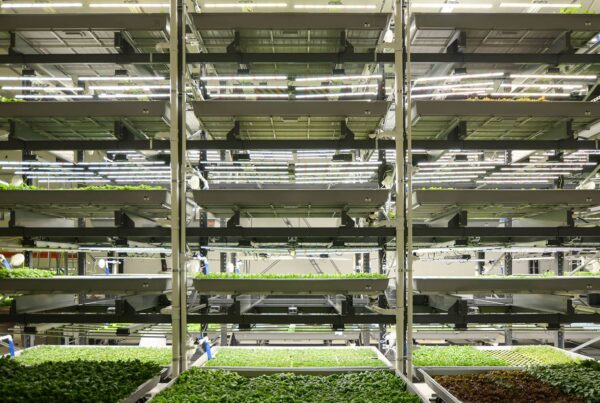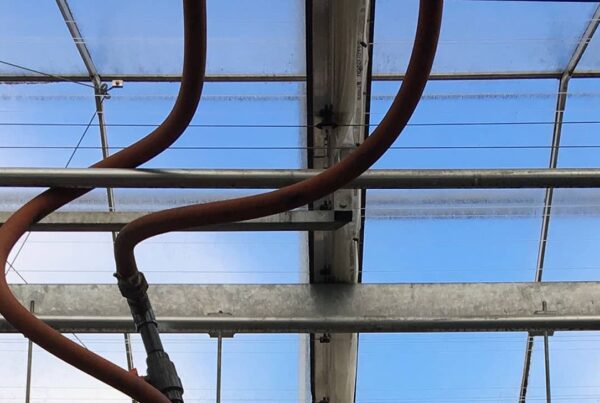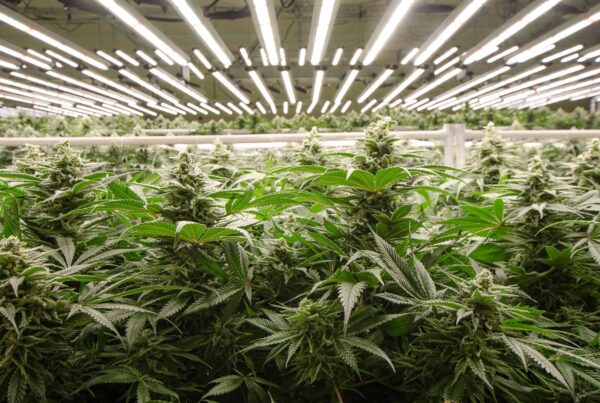The vertically integrated companies’ Managing Director of Cultivation shares how Kush Alley won the second place Demand Response Impact Award at the 8th Annual Los Angeles Department of Water and Power Sustainability Awards.
To manage energy demand spikes during hot Southern California summers, the Los Angeles Department of Water and Power (LADWP) created a demand-response program incentivizing commercial energy users to power down high-energy systems during peak hours.
When Chad Salute, Managing Director of Cultivation at Kush Alley and Maven Genetics, first heard of this program through Maven Genetic’s COO Mike Covington, he knew it was a “no-brainer” for LA-based vertically integrated cannabis companies to enroll–not only would the company avoid paying for higher electricity rates, it also would be paid to do so. Kush Alley and Maven, customers of RII-member Hawthorne Gardening, earned $21,000 across their three facilities to cut their energy use during six demand response events.
“Usually 24 or 48 hours before [an expected peak load], we’ll get a text message saying, ‘We want you to tone your [energy] usage down,’” Salute told Resource Innovation Institute. “We can then go into all our rooms and basically cut our lights by 50 percent, or even turn them off, which in turn lowers our A/C usage. We can easily cut our load by 86% or more.
“In fact, this is our standard practice during high heat load days to not put added stress on the equipment. We were already doing what they wanted but now we can actually get an incentive to do so,” Salute added.
About Kush Alley
& Maven Genetics
Canopy size: 30,000 sq ft across 3 facilities (10k sq. ft. of bloom canopy per location)
Room layout: 50% of rooms in double-stacked tier, expanding to up to 100% of rooms by end of 2024; 42-60 inches of space between vertical racks
Growing media: Rockwool (hydroponic)
Lights: LEDs

Those massive energy use cuts ranked second best in the program, earning Kush Alley, which also operates a dispensary under the same name, a Demand Response Impact Award at the 8th Annual LADWP Sustainability Awards in May 2023.
“It was cool to win an award alongside these giants in the industry, like USC, AirGas USA, and LAX,” Salute shared. “To be up there as a small cannabis company, this can show how much, if we all participated, we actually can save [as an industry].” Most importantly, these energy cuts didn’t negatively impact yield or crop quality.
Lights would only be turned off for 5 hours of the day, Salute said. To make up for that lost exposure, Salute would run the lights at a higher intensity a bit earlier in the day, before the demand response window, to still hit daily light integral (DLI) targets. “We do a lot of R&D on different daylight schedules,” he noted, adding that what the companies are finding is “it’s just about getting those [photons] in where the plants can take it.”
For this, “we use Gavita LED lights that are controlled by their controller,” Salute said. “This equipment gives us the ability to control the wattage of the lights from 10%-100%. During these demand response events, all we have to do is temporarily reduce the wattage of the lights which is easily done via the … controller.”
In addition to its participation in the demand response program and adjusting light schedules accordingly, Kush Alley and Maven Genetics also make it standard procedure to stagger HVAC system start times. This minimizes peak load draw, saving the grid from energy spikes, and reduces their energy bill (the companies are billed on their peak demand every quarter-hour).
“This is a great example of how easy it is to adjust LED light schedules with just a few clicks on the controller to dim fixtures,” says Dr. Craig Yendrek, a senior scientist at Gavita Horticultural Lighting (a division of Hawthorne Gardening). “And since the utility’s energy reduction requests are sporadic and typically only for short periods of time, there is no major risk to production schedules because the overall impact to DLI is very small.”
While federal resources remain unavailable to the cannabis industry, Salute said state and local groups can help reduce energy costs and help with upgrading to high-efficiency systems, and advises other indoor farmers to work on outreach. “There are a lot of resources out there: there’s state resources, there’s local resources, power company resources. They all have either access to programs or know that there are programs that you can either get rebates or incentivize reduction of power.”
For example, Salute’s relationship with the LADWP started with a simple phone call. “Unless you reach out to them, you’re not going to know what’s available,” he said.






